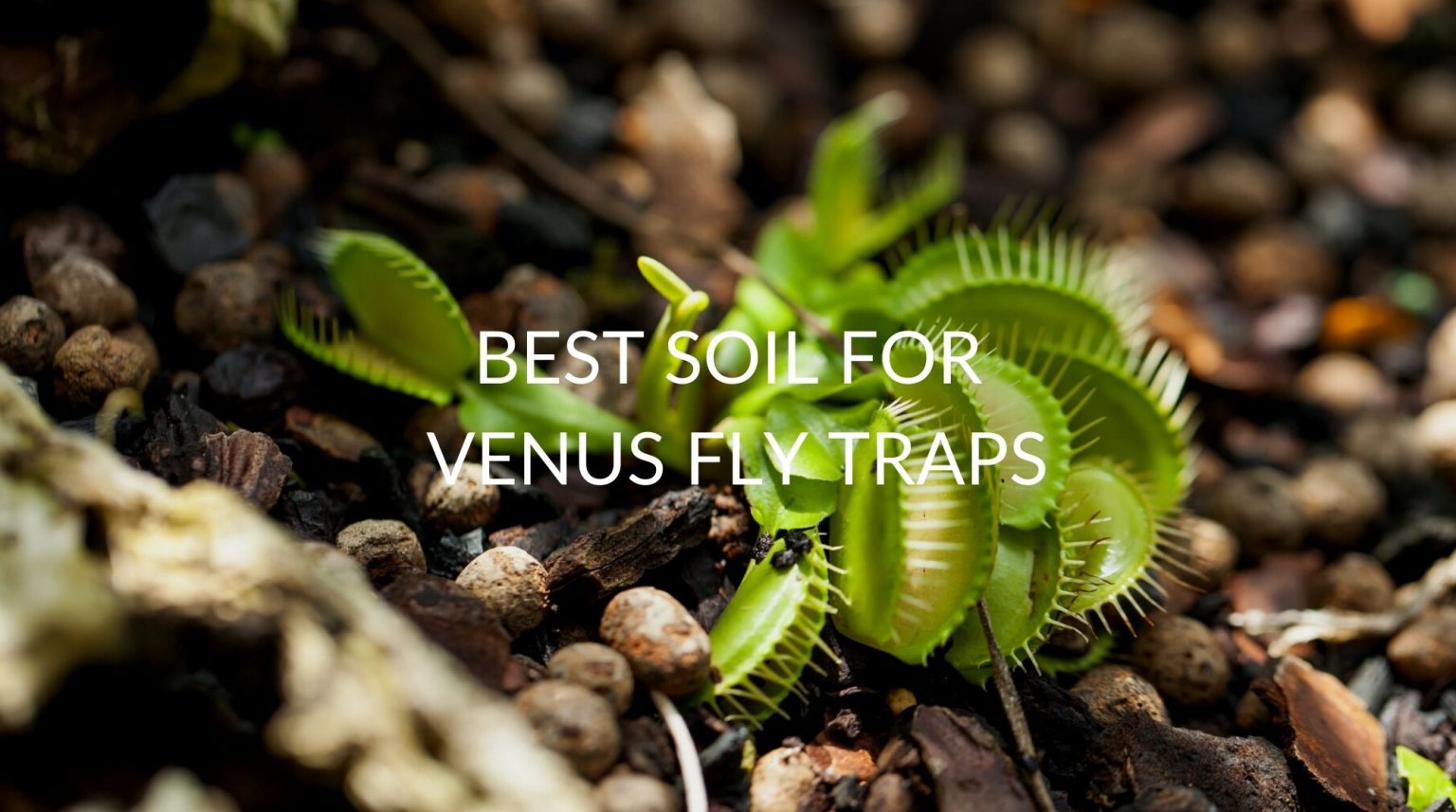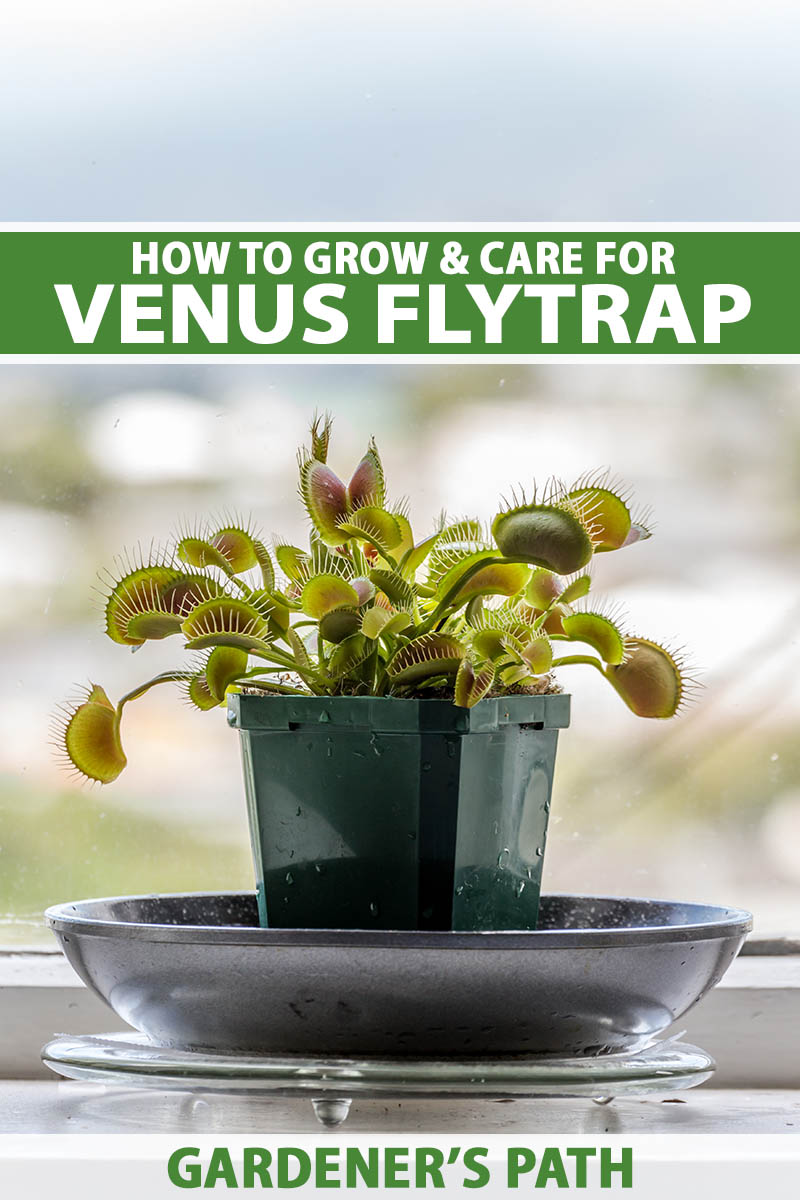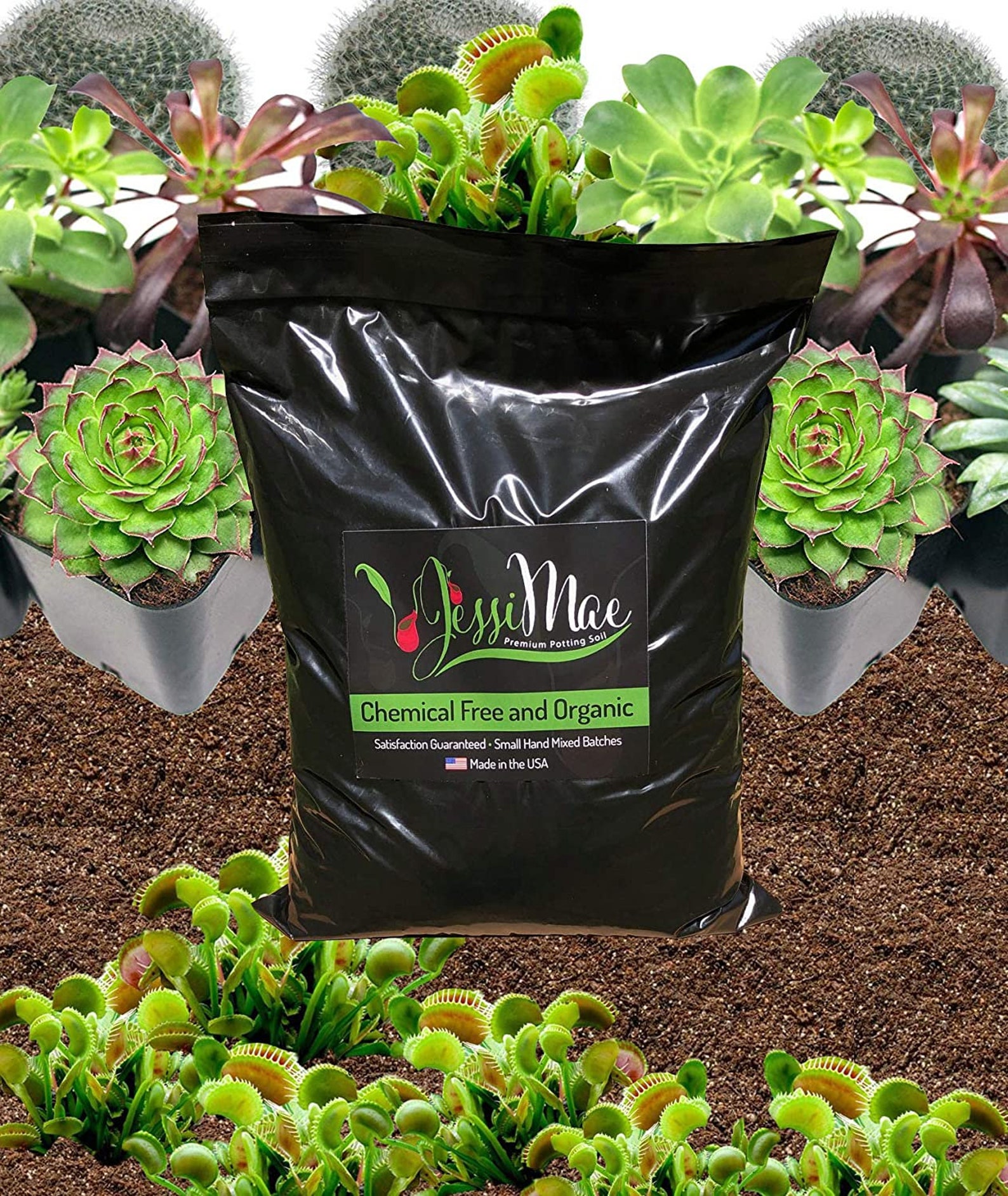Unlocking the Secrets of Venus Flytrap Soil
Venus flytraps, also known as Dionaea muscipula, are carnivorous plants that thrive in unique environments. One of the most critical factors in their survival and success is the type of soil they are grown in. Soil for Venus flytraps must be carefully selected to meet the plant’s specific needs, as the wrong soil can lead to root rot, poor growth, and even death. In fact, using regular potting soil can be detrimental to the plant’s health, as it can retain too much water and cause the roots to rot.
The unique requirements of Venus flytraps are due to their evolution in nutrient-poor bogs and savannas. In these environments, the plants have adapted to obtain essential nutrients by capturing and digesting insects. As a result, they require a soil that is low in nutrients and high in acidity. The ideal soil for Venus flytraps should have a pH between 3.5 and 5.5, which is much lower than regular potting soil. Additionally, the soil should be well-draining to prevent waterlogged soil conditions that can lead to root rot.
Using the right soil for Venus flytraps is crucial for their survival and success. A well-suited soil mix can provide the necessary conditions for the plant to thrive, while the wrong soil can lead to a range of problems. By understanding the unique needs of Venus flytraps and selecting the right soil, growers can help their plants reach their full potential and enjoy the fascinating and rewarding experience of cultivating these carnivorous wonders.
In the next section, we will explore the key characteristics of a good Venus flytrap soil mix and provide tips on how to choose the best potting mix for your plant.
What Makes a Good Venus Flytrap Soil Mix?
A well-suited soil mix for Venus flytraps is crucial for their survival and success. The ideal soil for these carnivorous plants should have three key characteristics: high acidity, low nutrient content, and good drainage. The acidity of the soil is particularly important, as Venus flytraps thrive in environments with a pH between 3.5 and 5.5. This acidity helps to prevent the growth of bacteria and fungi that can harm the plant, while also providing the necessary conditions for the plant’s roots to absorb essential nutrients.
The low nutrient content of the soil is also essential for Venus flytraps. These plants have adapted to obtain nutrients by capturing and digesting insects, and as such, they do not require a lot of nutrients from the soil. In fact, using a soil with high nutrient content can be detrimental to the plant’s health, as it can lead to an overabundance of nutrients and cause the plant to become leggy and weak.
Good drainage is also critical for Venus flytraps, as they are prone to root rot if the soil is too wet. A well-draining soil mix will help to prevent waterlogged soil conditions, which can be fatal to the plant. To achieve good drainage, a soil mix for Venus flytraps should contain ingredients such as perlite, vermiculite, or sand, which help to improve the soil’s water-holding capacity and prevent waterlogging.
By understanding the key characteristics of a good Venus flytrap soil mix, growers can provide their plants with the necessary conditions to thrive. In the next section, we will explore how to choose the best potting mix for your Venus flytrap, including recommendations for high-quality products and tips for selecting the right mix for your plant.
How to Choose the Best Potting Mix for Your Venus Flytrap
Choosing the right potting mix for your Venus flytrap is crucial for its survival and success. With so many options available, it can be overwhelming to select the best one. However, by considering a few key factors, you can make an informed decision and provide your plant with the best possible start.
Look for a potting mix that is specifically designed for carnivorous plants like Venus flytraps. These mixes are usually formulated to meet the unique needs of these plants, with high acidity, low nutrient content, and good drainage. Some popular options include Miracle-Gro’s Carnivorous Plant Mix and Black Gold’s Carnivorous Plant Potting Mix.
When selecting a potting mix, also consider the ingredients. A good mix should contain a combination of peat moss, perlite, and vermiculite. These ingredients help to retain moisture, improve drainage, and provide aeration to the roots. Avoid mixes that contain fertilizers or composts, as these can harm your Venus flytrap.
Another important factor to consider is the pH level of the potting mix. Venus flytraps thrive in acidic environments, with a pH between 3.5 and 5.5. Look for a mix that is specifically formulated to meet this pH range.
Finally, consider the reputation of the manufacturer. Look for companies that specialize in carnivorous plant care and have a reputation for producing high-quality potting mixes.
By following these tips, you can choose the best potting mix for your Venus flytrap and provide it with the best possible start. Remember to always read the label carefully and look for mixes that are specifically designed for carnivorous plants.
The Importance of Avoiding Fertilizers and Composts
Fertilizers and composts are commonly used to promote healthy growth in plants, but they can be detrimental to Venus flytraps. These plants have evolved to obtain nutrients by capturing and digesting insects, and as such, they do not require a lot of nutrients from the soil. In fact, using fertilizers or composts on Venus flytraps can lead to an overabundance of nutrients, which can harm the plant.
The use of fertilizers and composts can disrupt the plant’s natural nutrient cycle, causing it to become dependent on these external sources of nutrients. This can lead to a range of problems, including poor growth, yellowing leaves, and even death. Additionally, fertilizers and composts can alter the pH of the soil, which can be detrimental to the plant’s health.
It’s also important to note that Venus flytraps are sensitive to the types of nutrients found in fertilizers and composts. These plants require a specific balance of nutrients, and using fertilizers or composts can disrupt this balance. For example, using a fertilizer high in nitrogen can cause the plant to produce more leaves, but it can also lead to a decrease in the plant’s ability to capture insects.
Instead of using fertilizers and composts, it’s recommended to use a high-quality potting mix specifically designed for carnivorous plants like Venus flytraps. These mixes are formulated to meet the unique needs of these plants, and they do not contain the high levels of nutrients found in fertilizers and composts.
By avoiding the use of fertilizers and composts, you can help ensure the health and well-being of your Venus flytrap. Remember to always read the label carefully and look for potting mixes that are specifically designed for carnivorous plants.
Repotting Your Venus Flytrap: A Step-by-Step Guide
Repotting your Venus flytrap is a crucial process that requires careful attention to detail. When done correctly, repotting can help to promote healthy growth, prevent root rot, and ensure the overall well-being of your plant. In this section, we will provide a step-by-step guide on how to repot your Venus flytrap, including how to handle the roots, choose the right pot, and water the plant after repotting.
Step 1: Prepare the New Pot
Before repotting your Venus flytrap, make sure to prepare the new pot by filling it with a high-quality potting mix specifically designed for carnivorous plants like Venus flytraps. Avoid using regular potting soil, as it can retain too much water and cause root rot.
Step 2: Handle the Roots with Care
When handling the roots of your Venus flytrap, be gentle and careful not to damage them. Use a fork to gently loosen the roots from the old pot, taking care not to pull or tug on the roots.
Step 3: Choose the Right Pot
Choose a pot that is specifically designed for carnivorous plants like Venus flytraps. These pots typically have good drainage holes to prevent waterlogging and are made of a material that will not react with the acidic soil.
Step 4: Water the Plant After Repotting
After repotting your Venus flytrap, water the plant thoroughly to settle the soil and provide enough moisture to support establishment. Avoid getting water on the leaves or crown of the plant, as this can cause rot and other problems.
By following these steps and using the right soil mix, you can help to ensure the health and well-being of your Venus flytrap. Remember to always handle the roots with care and choose a pot that is specifically designed for carnivorous plants.
Troubleshooting Common Soil-Related Issues
Despite the best efforts of Venus flytrap enthusiasts, soil-related issues can still arise. In this section, we will address some common problems that may occur when growing Venus flytraps, and provide solutions and advice on how to adjust the soil mix or care routine to resolve these issues.
Root Rot
Root rot is a common problem that can occur when the soil is too wet or waterlogged. To prevent root rot, make sure to use a well-draining soil mix and avoid getting water on the leaves or crown of the plant. If you notice any signs of root rot, such as soft or mushy roots, remove the affected roots and repot the plant in fresh soil.
Yellowing Leaves
Yellowing leaves can be a sign of nutrient deficiency or too much fertilizer. Check the soil pH and adjust it if necessary. Also, make sure to use a balanced fertilizer that is specifically designed for carnivorous plants like Venus flytraps.
Poor Growth
Poor growth can be caused by a variety of factors, including inadequate light, water, or nutrients. Make sure to provide your Venus flytrap with bright, indirect light and maintain a consistent watering schedule. Also, consider repotting the plant in a fresh soil mix that is specifically designed for carnivorous plants.
Adjusting the Soil Mix
If you notice any of the above issues, it may be necessary to adjust the soil mix. Consider adding more peat moss or perlite to improve drainage, or adding more fertilizer to provide essential nutrients. However, be careful not to over-fertilize, as this can cause more harm than good.
By following these tips and adjusting the soil mix or care routine as needed, you can help to prevent common soil-related issues and ensure the health and well-being of your Venus flytrap.
Creating Your Own Venus Flytrap Soil Mix at Home
For the more adventurous readers, creating a custom soil mix for Venus flytraps can be a fun and rewarding experience. With a few simple ingredients, you can create a soil mix that is tailored to the specific needs of your plant. In this section, we will provide a recipe and instructions on how to create a custom soil mix for Venus flytraps using ingredients like peat moss, perlite, and vermiculite.
Ingredients:
1 part peat moss
1 part perlite
1 part vermiculite
1 tablespoon of dolomitic limestone (optional)
Instructions:
1. Mix the peat moss, perlite, and vermiculite together in a bowl until well combined.
2. If desired, add the dolomitic limestone to the mix to provide a source of calcium and magnesium.
3. Mix the ingredients together until they are well combined.
4. Use the custom soil mix to repot your Venus flytrap, following the steps outlined in the repotting guide.
Important Notes:
When creating a custom soil mix, it is essential to follow proper ratios and guidelines to ensure the health and well-being of your Venus flytrap. Avoid using too much of any one ingredient, as this can lead to an imbalance in the soil mix.
Also, keep in mind that creating a custom soil mix can be a trial-and-error process, and it may take some experimentation to find the perfect blend for your plant. Be patient, and don’t be afraid to try different combinations of ingredients until you find the one that works best for your Venus flytrap.
Conclusion: Finding the Perfect Soil for Your Venus Flytrap
In conclusion, finding the perfect soil for your Venus flytrap is crucial for its survival and success. By understanding the unique needs of these plants and selecting a high-quality potting mix specifically designed for carnivorous plants, you can provide your Venus flytrap with the best possible start.
Remember to avoid using fertilizers and composts, which can lead to an overabundance of nutrients and harm the plant. Instead, focus on creating a well-balanced soil mix that provides the right amount of acidity, nutrients, and drainage.
For the more adventurous readers, creating a custom soil mix at home can be a fun and rewarding experience. By following the recipe and instructions provided in this article, you can create a soil mix that is tailored to the specific needs of your Venus flytrap.
Ultimately, the key to finding the perfect soil for your Venus flytrap is to experiment and find the perfect blend for your unique plant. Don’t be afraid to try different combinations of ingredients and adjust the soil mix as needed to ensure the health and well-being of your plant.
By following the tips and guidelines outlined in this article, you can help your Venus flytrap thrive and enjoy the fascinating and rewarding experience of growing these unique and fascinating plants.




:max_bytes(150000):strip_icc()/venus-fly-trap-plant-profile-4688605-4-a554c2a9e7de4fdc8c0117e9ac6f4506.jpg)



